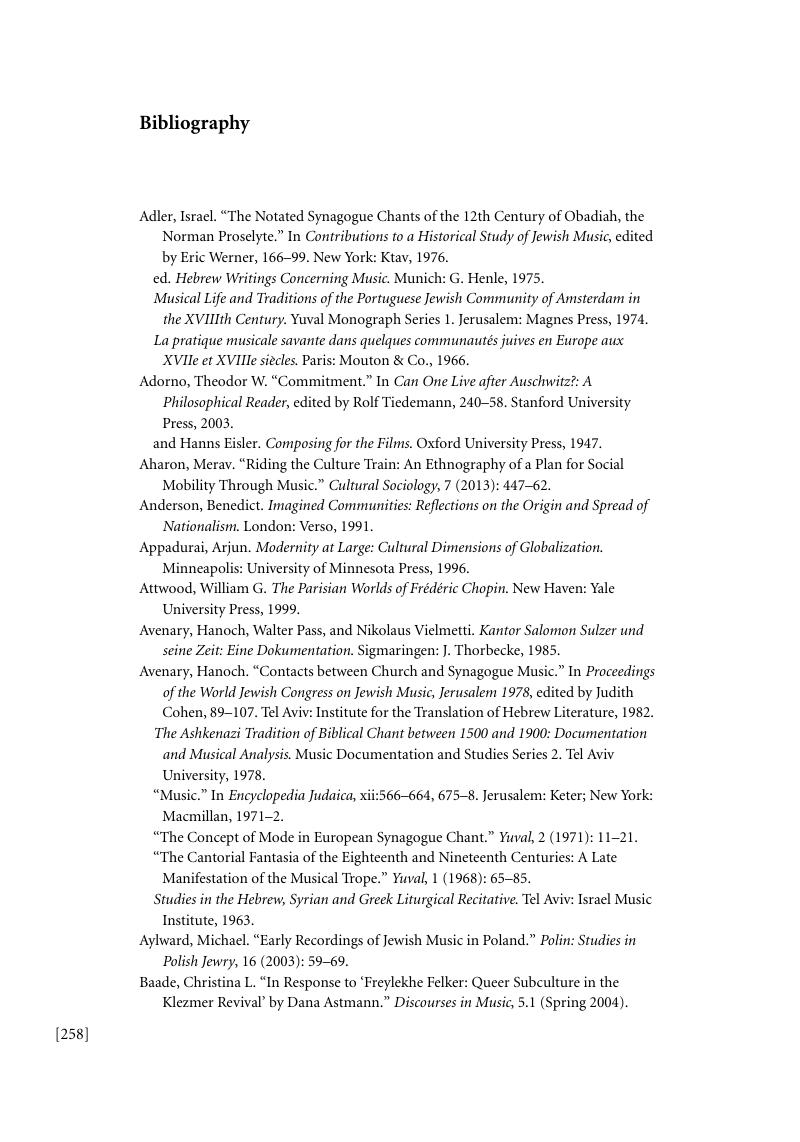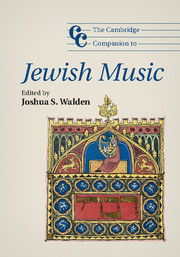Book contents
- The Cambridge Companion to Jewish Music
- The Cambridge Companion to Jewish Music
- Copyright page
- Dedication
- Contents
- Music examples and figure
- Contributors
- Book part
- Introduction
- Part One Conceptions of Jewish music
- Part Two Jewish music in religious, folk, and popular contexts
- Part Three Periods, places, and genres of Jewish music composition
- Bibliography
- Index
- Cambridge Companions to Music
- References
Bibliography
Published online by Cambridge University Press: 05 December 2015
- The Cambridge Companion to Jewish Music
- The Cambridge Companion to Jewish Music
- Copyright page
- Dedication
- Contents
- Music examples and figure
- Contributors
- Book part
- Introduction
- Part One Conceptions of Jewish music
- Part Two Jewish music in religious, folk, and popular contexts
- Part Three Periods, places, and genres of Jewish music composition
- Bibliography
- Index
- Cambridge Companions to Music
- References
Summary

- Type
- Chapter
- Information
- The Cambridge Companion to Jewish Music , pp. 258 - 279Publisher: Cambridge University PressPrint publication year: 2015



